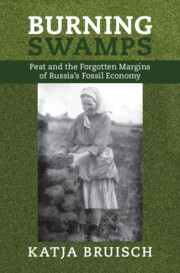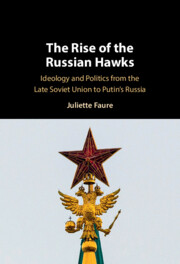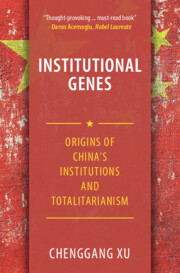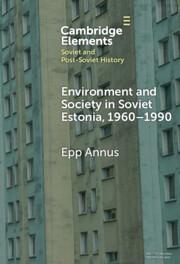Refine search
Actions for selected content:
229 results
15 - The Crimea Annexation and the Russia–Ukraine War
- from Part IV - The Nuclear Era
-
- Book:
- Crises, War, and Diplomacy
- Published online:
- 07 November 2025
- Print publication:
- 20 November 2025, pp 336-366
-
- Chapter
- Export citation
Culture Wars: Latgalian Identity Between Soviet and Latvian Colonial Imaginaries (1958–1959)
-
- Journal:
- Nationalities Papers , FirstView
- Published online by Cambridge University Press:
- 09 October 2025, pp. 1-20
-
- Article
-
- You have access
- Open access
- HTML
- Export citation
Introduction
-
- Book:
- Burning Swamps
- Published online:
- 06 September 2025
- Print publication:
- 25 September 2025, pp 1-24
-
- Chapter
- Export citation

Burning Swamps
- Peat and the Forgotten Margins of Russia's Fossil Economy
-
- Published online:
- 06 September 2025
- Print publication:
- 25 September 2025
Chapter 7 - Ideological Factors Influencing the Soviet Union’s Investment in Sport Psychology
-
-
- Book:
- Questioning Conventional Assumptions of Competition Dynamics
- Published online:
- 07 May 2025
- Print publication:
- 21 August 2025, pp 183-194
-
- Chapter
- Export citation
Chapter 3 - Socialist Competition
-
-
- Book:
- Questioning Conventional Assumptions of Competition Dynamics
- Published online:
- 07 May 2025
- Print publication:
- 21 August 2025, pp 58-97
-
- Chapter
- Export citation
Lightning-Sword and Blazing Steed under the Hammer and Sickle: The Rebirth of David of Sassoun in Soviet Armenia
-
- Journal:
- Nationalities Papers , FirstView
- Published online by Cambridge University Press:
- 30 July 2025, pp. 1-27
-
- Article
-
- You have access
- Open access
- HTML
- Export citation
7 - The New Superpower World Order
-
- Book:
- Warriors in Washington
- Published online:
- 23 June 2025
- Print publication:
- 10 July 2025, pp 180-211
-
- Chapter
- Export citation
Chapter 4 - The Second World War
- from Part I - Key Places and Events
-
-
- Book:
- Sean O'Casey in Context
- Published online:
- 23 June 2025
- Print publication:
- 10 July 2025, pp 45-56
-
- Chapter
- Export citation

The Rise of the Russian Hawks
- Ideology and Politics from the Late Soviet Union to Putin's Russia
-
- Published online:
- 11 June 2025
- Print publication:
- 29 May 2025

Institutional Genes
- Origins of China's Institutions and Totalitarianism
-
- Published online:
- 03 June 2025
- Print publication:
- 26 June 2025
2 - Reenchanting Soviet Modernity (1960–1985)
-
- Book:
- The Rise of the Russian Hawks
- Published online:
- 11 June 2025
- Print publication:
- 29 May 2025, pp 28-60
-
- Chapter
- Export citation
1 - Introduction
-
- Book:
- The Rise of the Russian Hawks
- Published online:
- 11 June 2025
- Print publication:
- 29 May 2025, pp 1-27
-
- Chapter
- Export citation
9 - Conclusion
-
- Book:
- The Rise of the Russian Hawks
- Published online:
- 11 June 2025
- Print publication:
- 29 May 2025, pp 291-299
-
- Chapter
- Export citation
5 - “The Minister of Victory”
-
- Book:
- Moshe Dayan
- Published online:
- 03 April 2025
- Print publication:
- 10 April 2025, pp 194-236
-
- Chapter
- Export citation

Environment and Society in Soviet Estonia, 1960–1990
- An Intimate Cultural History
-
- Published online:
- 07 April 2025
- Print publication:
- 08 May 2025
-
- Element
-
- You have access
- Open access
- HTML
- Export citation
Japanese Fates in China and the Soviet Union from World War to Cold War: Notes on Our Collaborative Research into Soviet and Chinese Archives
-
- Journal:
- Asia-Pacific Journal / Volume 21 / Issue 2 / February 2023
- Published online by Cambridge University Press:
- 14 March 2025, e1
-
- Article
-
- You have access
- Open access
- Export citation
Was There a Diplomatic Alternative? The Atomic Bombing and Japan's Surrender
-
- Journal:
- Asia-Pacific Journal / Volume 19 / Issue 20 / October 2021
- Published online by Cambridge University Press:
- 14 March 2025, e4
-
- Article
-
- You have access
- Open access
- Export citation
“Don’t You Think That We’ve Reached an Extreme?”: The Issue of TV Broadcast Language in Soviet Latvia, 1955–71
-
- Journal:
- Nationalities Papers , FirstView
- Published online by Cambridge University Press:
- 04 March 2025, pp. 1-20
-
- Article
-
- You have access
- Open access
- HTML
- Export citation
AI as a Historical Lens: An Experiment in Periodization of Russia’s State Photography Archive with Neural Networks
-
- Journal:
- Slavic Review / Volume 84 / Issue 1 / Spring 2025
- Published online by Cambridge University Press:
- 21 July 2025, pp. 1-22
- Print publication:
- Spring 2025
-
- Article
- Export citation
